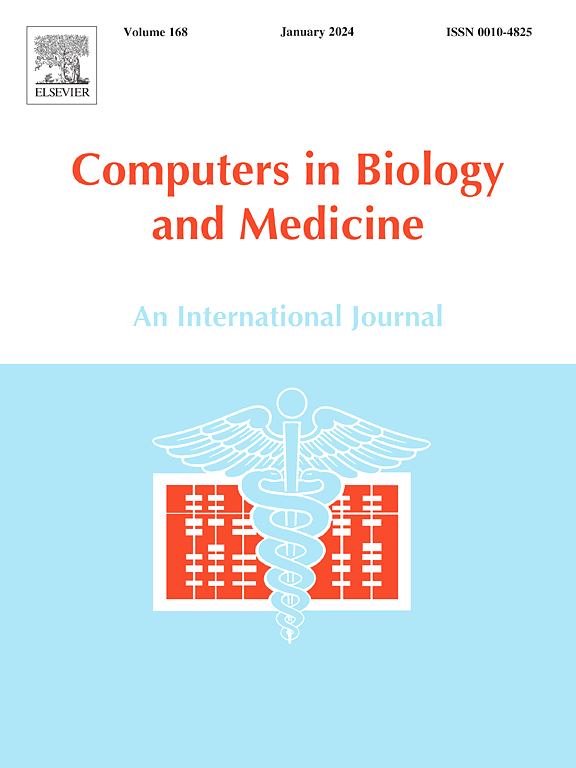Patient-specific lattice-Boltzmann simulations with inflow conditions from magnetic resonance velocimetry measurements for analyzing cerebral aneurysms
IF 7
2区 医学
Q1 BIOLOGY
引用次数: 0
Abstract
Magnetic resonance velocimetry (MRV) measurements were used as inflow conditions for lattice-Boltzmann (LB) simulations to analyze cerebral aneurysms. Unlike previous studies on larger vascular structures, aneurysm analysis involves smaller scales and higher pressure differences, making near-wall velocity measurements challenging with standard 3 Tesla scanners. To address this, the aneurysm geometry was scaled 5-fold for sufficient magnetic resonance velocimetry (MRV) resolution, with inflow measurements interpolated onto the simulation grid while ensuring dimensionless equivalence via the Reynolds number. Zero-velocity points were included near walls to enforce the no-slip condition if measurement points exceed the simulation domain. The proposed interpolation-based inflow method was compared to a nearest-neighbor approach and a parabolic velocity profile. It achieved the best agreement with MRV centerline velocity measurements (mean error: 3.12%), followed by the nearest-neighbor method (3.18%) and the parabolic profile (9.85%). The parabolic inflow led to centerline velocity overpredictions and total pressure underpredictions, while the nearest-neighbor approach underestimated the wall shear stress (WSS) and exhibited inconsistencies in wall normal stress (e.g., maximum WSS was 18.3% lower than with interpolation). Using the interpolated inflow method, Newtonian and non-Newtonian flows based on the Carreau–Yasuda model were compared. The non-Newtonian model showed lower centerline velocities and total pressure but higher WSS than the Newtonian case. These findings highlight the importance of accurate, patient-specific inflow conditions and the necessity of non-Newtonian modeling for reliable WSS predictions. Combining MRV measurements with non-Newtonian LB simulations provides a robust framework for personalized cerebral aneurysm hemodynamic evaluation.

求助全文
约1分钟内获得全文
求助全文
来源期刊

Computers in biology and medicine
工程技术-工程:生物医学
CiteScore
11.70
自引率
10.40%
发文量
1086
审稿时长
74 days
期刊介绍:
Computers in Biology and Medicine is an international forum for sharing groundbreaking advancements in the use of computers in bioscience and medicine. This journal serves as a medium for communicating essential research, instruction, ideas, and information regarding the rapidly evolving field of computer applications in these domains. By encouraging the exchange of knowledge, we aim to facilitate progress and innovation in the utilization of computers in biology and medicine.
 求助内容:
求助内容: 应助结果提醒方式:
应助结果提醒方式:


